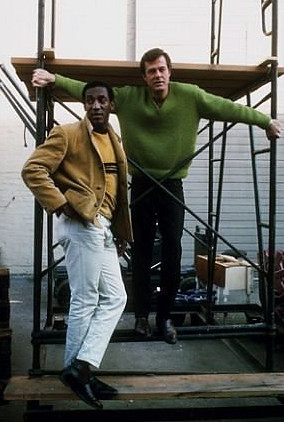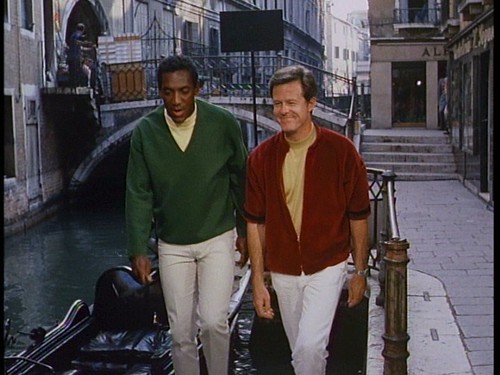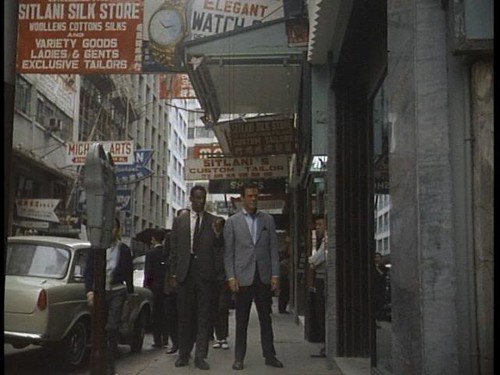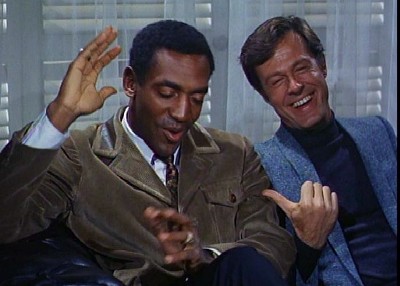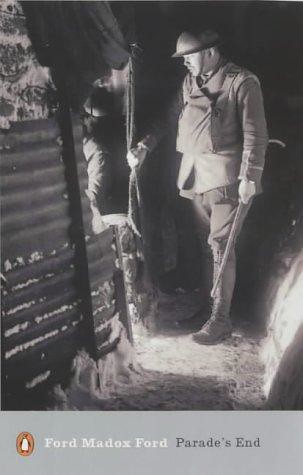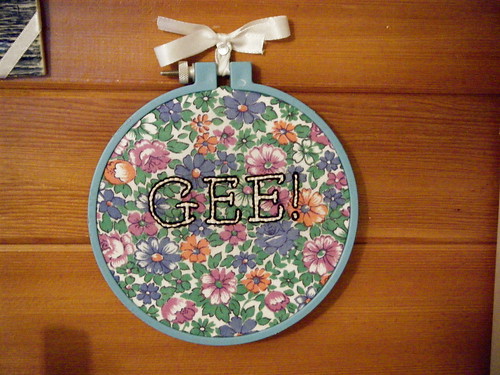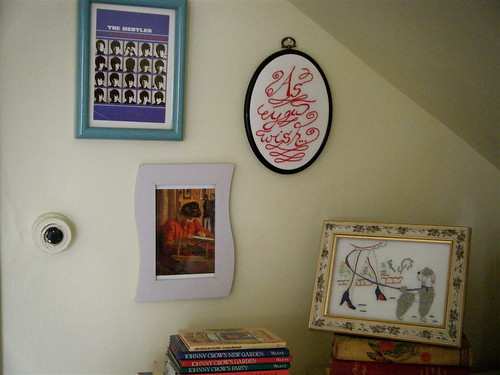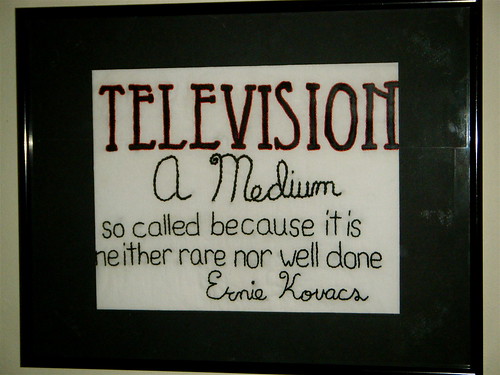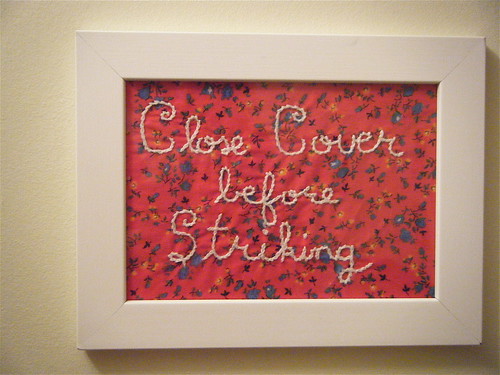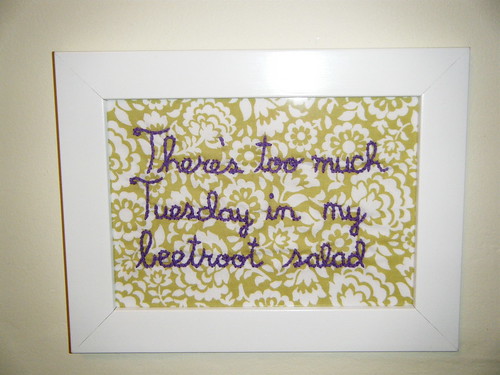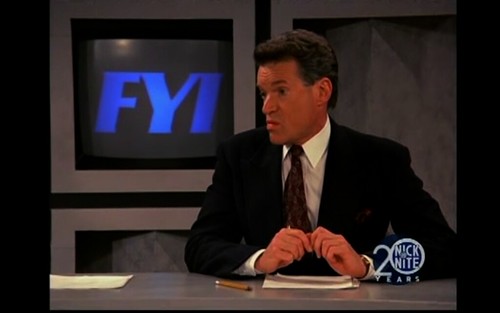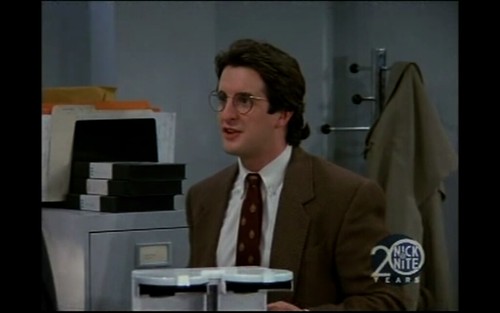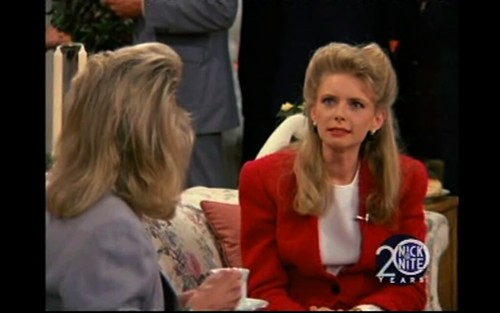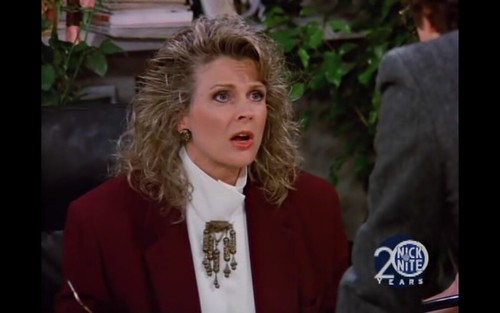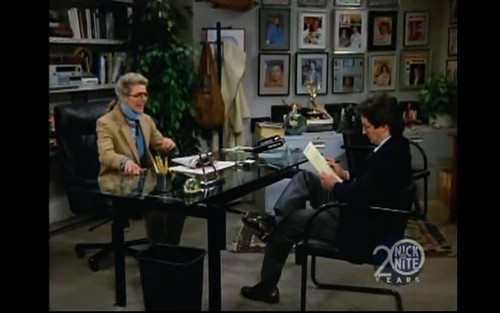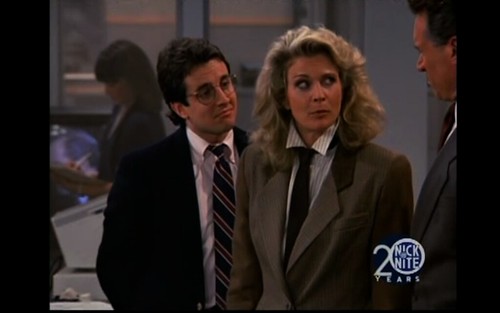Given my affinity for the Sixties Spy-Fi genre, I have gotten a number of requests to write something about I Spy, which ran for three seasons from 1965-1968.
I only got into I Spy recently, since I tend to watch parodies and slightly surreal spy shows and movies like The Avengers and Derek Flint. But I really adore I Spy now that I've started watching it.
If I were to compare it to another spy-fi show, it would be Danger Man, in terms of it's realism. You wont find any gadgets in I Spy. The two characters rely on using their wits and intelligence to get them out of sticky situations. There's one episode were they break out of a locked room using some dry ice and saltpeter.
Here's a clip of Scott and Kelly breaking out of jail.
Now, why do I love this show?
Well, a couple of reasons.
The first is the relationship between Scott and Kelly. Bill Cosby plays Alexander Scott and Robert Culp plays Kelly Robinson, they work for the American Government as secret agents using the cover of being tennis bums to cover up their jet-setting ways. The focus of the show is really on their buddy relationship. Their hip banter back and forth is a bigger draw for watching this show than the espionage is. Kelly is the athletic playboy who's after the girl (most of the time) and lives by his wits. Whereas Scott is the working class Rhodes Scholar who speaks several languages and is more pragmatic. But these two different people complement each other it make their partnership work. It also helps that Culp and Cosby were actual friends and their amazing chemistry together is genuine. Kelly and Scott treated each other as brothers and you knew that by the end of the episode, no matter what they fought about or if anything tragic happened over the course of their assignment, they would end up together. Plus, they always worked together, which I like better than U.N.C.L.E., since Napoleon and Illya would spend most of every episode apart and you never really got to know their characters.
Here's a clip which sums up how much Scott and Kelly really cared for each other.
Now, why should you watch the show if you don't really like spy shows?
Well, for the reason why this makes the show almost entirely unique in the history of American television.
It's filmed on location.
Actual, exotic locations.
If Scott and Kelly are escaping the baddies by running across rooftops in Hong Kong, they are actually running across rooftops in Hong Kong.
If they're chasing someone on a Vespa in Rome, they are actually navigating Roman traffic.
You want to see Vegas back when it was cool in all it's neon glory?
Watch this show.
You want to see what Hong Kong looked like before the Chinese took it over and built skyscrapers?
Watch this show.
You want to see Venice with a slightly higher water level?
Watch this show.
You want to see San Francisco in the Sixties?
Watch this show, baby.
You want to see what everyday people wore and how cities looked on an ordinary day in the mid Sixties?
I know you do.
Screw Mad Men.
Watch I Spy.
I said earlier that this show is based on realism because of it's lack of gadgets. Well, it's much more than that. I said in my post on Danger Man that John Drake is more realistic than James Bond and it predated Bond on the screen. Well, I Spy is in direct contrast to the massively popular Sean Connery period. There are a number of references in it's pilot "So Long, Patrick Henry" (which was actually written by Robert Culp) to James Bond in order to highlight the direct contrast to James Bond. Bond is a fantasy, But Scott and Kelly are real. I Spy shows the tough, gritty world of being an agent. Yes, there is world travel and beautiful girls, but sometimes the girls are the enemy, or they die or they are just using Scott or Kelly. Plus Scott and Kelly know that they can't commit to a girl without giving their job and settling down. Their assignments are tough, dangerous and sometimes have no purpose. But they can't do anything about it because they knew what they were getting into and at the end of the day, they are like anyone else with a government job, but at least they have medical benefits and a pension. There aren't always happy endings in I Spy, but that's not to say that it's a strict dramatic show. There are episodes played purely for laughs (try watching "Will The Real Good Guys Please Stand Up") and there are some episodes that are really sad, but what makes the show great is it's combination of dramatic tension with the comedic banter and reactions of Scott and Kelly.
Here is an example of an action scene in Hong Kong. You can actually picture this happening to a real life spy team.
If I can just say a few words about the clothes.
Yes, the women were gorgeous Sixties fashions, but they also were what look like their own clothes.
But Scott and Kelly are really snappy dressers.
And they wear a lot of white jeans and repeat their clothes.
And they wear bright colours and a lot of knitwear for some reason.
So, there's a lot of fashion inspiration.
In terms of celebrity guest stars, there are some, but not as much as U.N.C.L.E.
But two notable ones are Anna Karina speaking in English in "A Gift From Alexander" and the fabulous Eartha Kitt playing a herion addicted singer in "The Loser", which was written by Robert Culp and is one of the best episodes of the series.
Now, you may have noticed something about the two stars of the show.
This is the first television show in history, maybe even in the entire Western history of performing itself, where a black man and a white man are shown as being not only co-stars, but as true equals. Yes, I Spy is a historically and culturally significant show in that regard, but I wasn't going to mention it, because it was never mentioned on the show. And that means that I Spy has aged well. It's also modest and admirable. Here they were, a groundbreaking show at the height of the civil rights movement and the two stars insisted not only on not making it a big deal, but on not mentioning it. They only wanted to entertain.
I Spy is available on DVD in Regions 1 and 4.

